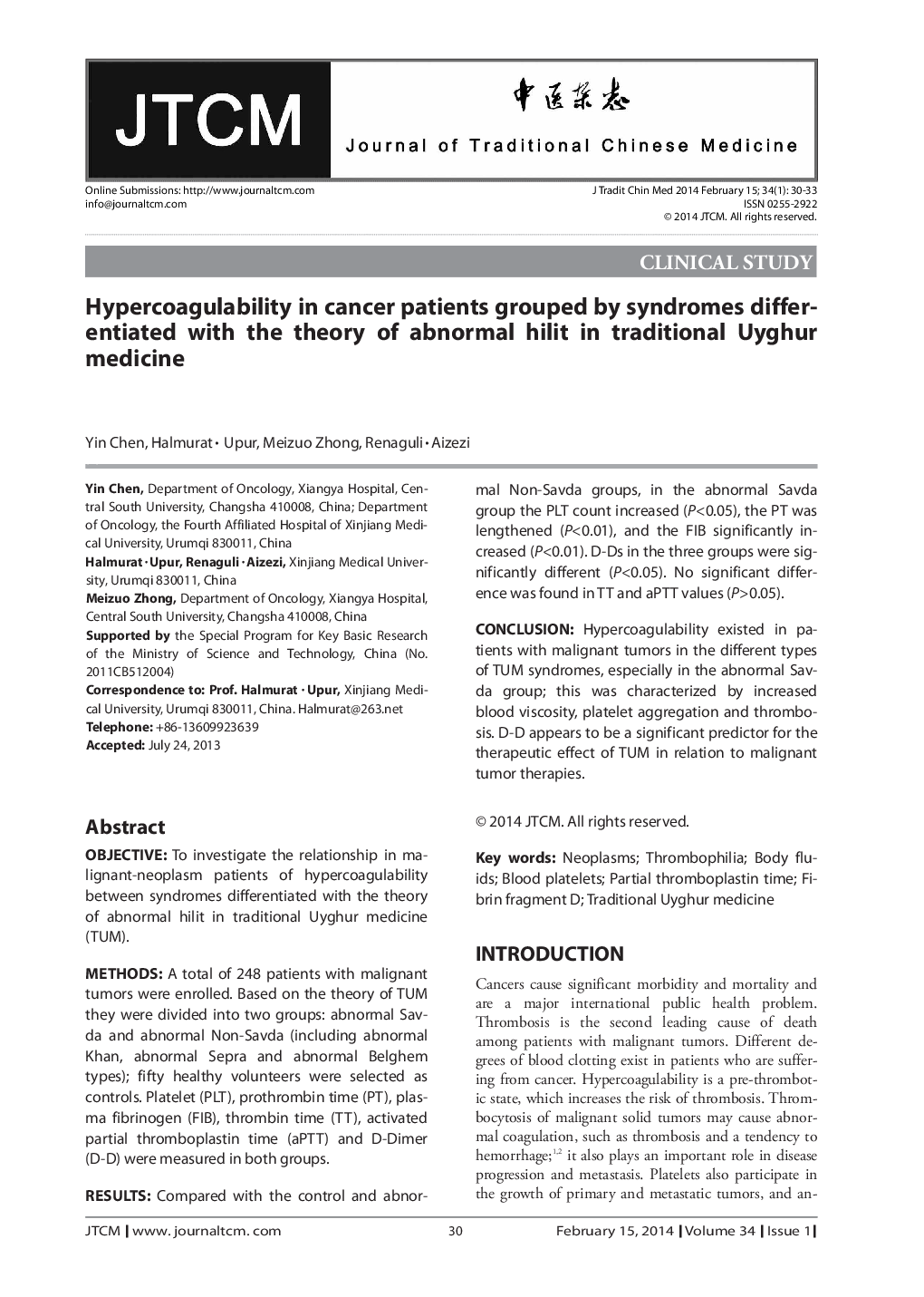| Article ID | Journal | Published Year | Pages | File Type |
|---|---|---|---|---|
| 4201244 | Journal of Traditional Chinese Medicine | 2014 | 4 Pages |
ObjectiveTo investigate the relationship in malignant-neoplasm patients of hypercoagulability between syndromes differentiated with the theory of abnormal hilit in traditional Uyghur medicine (TUM).MethodsA total of 248 patients with malignant tumors were enrolled. Based on the theory of TUM they were divided into two groups: abnormal Savda and abnormal Non-Savda (including abnormal Khan, abnormal Sepra and abnormal Belghem types); fifty healthy volunteers were selected as controls. Platelet (PLT), prothrombin time (PT), plasma fibrinogen (FIB), thrombin time (TT), activated partial thromboplastin time (aPTT) and D-Dimer (D-D) were measured in both groups.ResultsCompared with the control and abnormal Non-Savda groups, in the abnormal Savda group the PLT count increased (P<0.05), the PT was lengthened (P<0.01), and the FIB significantly increased (P<0.01). D-Ds in the three groups were significantly different (P<0.05). No significant difference was found in TT and aPTT values (P>0.05).ConclusionHypercoagulability existed in patients with malignant tumors in the different types of TUM syndromes, especially in the abnormal Savda group; this was characterized by increased blood viscosity, platelet aggregation and thrombosis. D-D appears to be a significant predictor for the therapeutic effect of TUM in relation to malignant tumor therapies.
